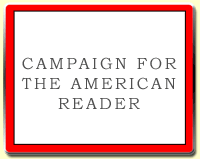Nineteen Eighty-Four, by George OrwellRead about the other books on the list.
The undisputed masterpiece of dystopian fiction, George Orwell’s soul-shaking contribution to our collective nightmares was first published in 1949, in the wake of World War II, as humanity tried to come to grips with what it had just allowed to happen—and, hopefully, figure out how to prevent it from ever happening again. As such, it’s not a subtle work in the least, but that’s part of its genius. In envisioning life is a fascistic near-future world in which government surveillance is omnipresent, loyalty to the state is prized above all else, and citizens are encouraged inform on anyone harboring as much as a subversive thought, Orwell put to paper a scenario so terrifying, so beyond the pale, that it’s impossible not to see it echoed in every small step we take toward that possible future. And what’s most critical to keeping Big Brother in power, you ask? The total control of information and an impressive ability to obfuscate it from the average good citizen—to mold history and stuff inconvenient information down the memory hole (of course, in the internet era, you hardly need absolute power to muddy the facts; a Facebook page will do). “The Ministry of Peace concerns itself with war, the Ministry of Truth with lies, the Ministry of Love with torture and the Ministry of Plenty with starvation,” Orwell tells us. “These contradictions are not accidental, nor do they result from from ordinary hypocrisy: they are deliberate exercises in doublethink.” Making someone doubt the truth in front of their eyes is the first step to convincing them the truth doesn’t matter. Only power matters.
Nineteen Eighty-four is on Stephen W. Potts's top five list of useful books about surviving surveillance, Linda Grant's top ten list of books about postwar Britain, Ella Cosmo's list of five fictional books-within-a-book too dangerous to read, the list of four books that changed Peter Twohig, the Guardian's list of the five worst book covers ever, the Independent's list of the fifteen best opening lines in literature, W.B. Gooderham's top ten list of books given in books, Katharine Trendacosta and Amanda Yesilbas's list of ten paranoid science fiction stories that could help you survive, Na'ima B. Robert's top ten list of Romeo and Juliet stories, Gabe Habash's list of ten songs inspired by books and a list of the 100 best last lines from novels. The book made Charlie Jane Anders's list of ten science fiction novels we pretend to have read, Juan E. Méndez's list of five books on torture, P. J. O’Rourke's list of the five best political satires, Daniel Johnson's five best list of books about Cold War culture, Robert Collins' top ten list of dystopian novels, Gemma Malley's top 10 list of dystopian novels for teenagers, is one of Norman Tebbit's six best books and one of the top ten works of literature according to Stephen King. It made a difference to Isla Fisher, and appears on John Mullan's lists of ten of the best Aprils in literature, ten of the best rats in literature, and ten of the best horrid children in fiction.
--Marshal Zeringue



